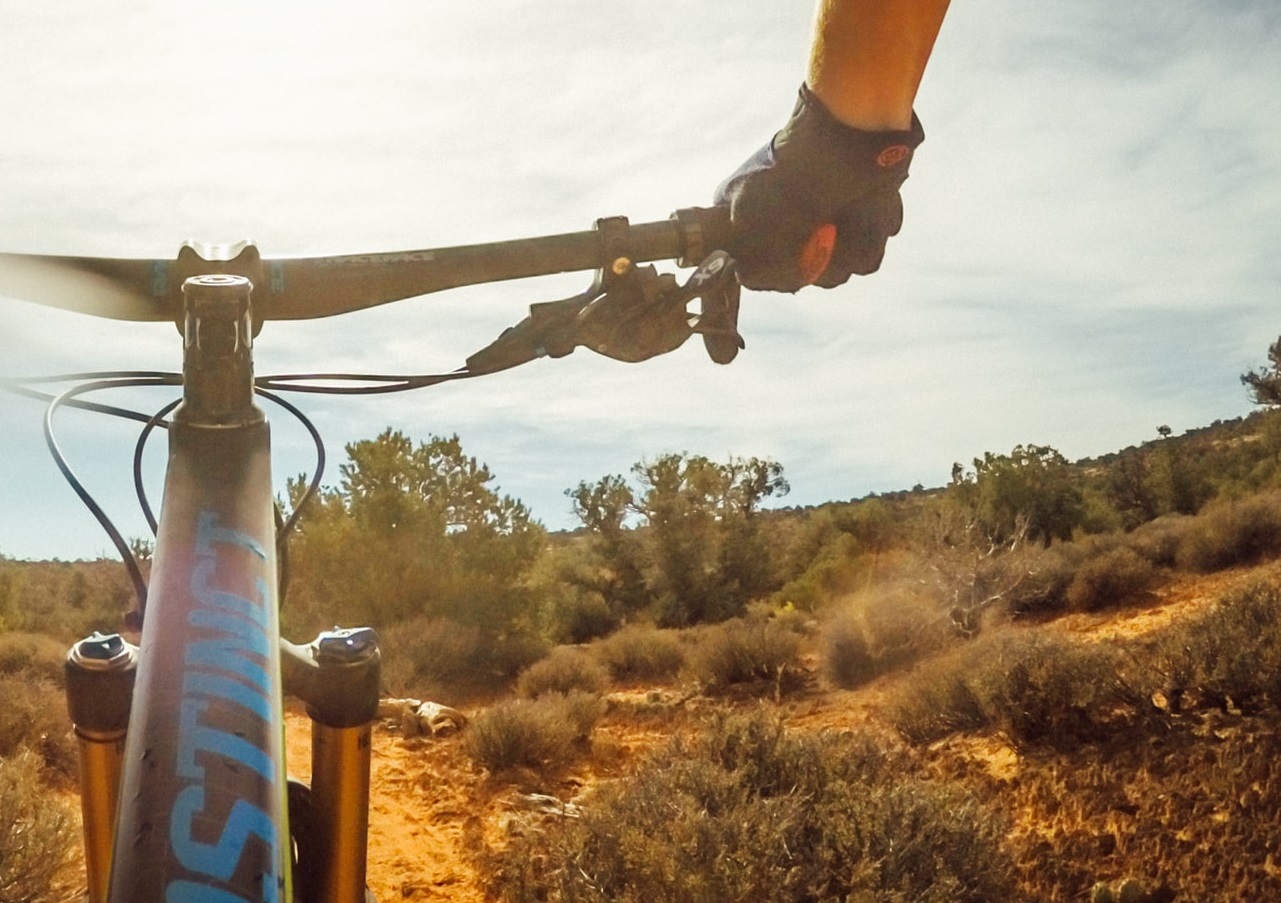Can mountain biking cause tennis elbow? If you’re an avid biker and you’ve ever had pain in your elbow, this is a question you want to answer and then read up on the details I have put together.
So yes, mountain biking can cause tennis elbow. Tennis elbow is one of the most common biking injuries and can has a variety of causes ranging from improper biking posture to a bike that is the wrong size. Any of these can cause stress on your forearms and result in tennis elbow or tendonitis.
What Causes Tennis Elbow?
There are many things that can cause this painful condition which is effectively microscopic tears in the forearm tissue.
- A riding position that is not natural is the main cause. In a normal sitting riding position and on a properly-sized bike, your weight is balanced on the seat and you can reach the handlebars with a slight flex to your arms. If the position is not natural like this, your forearms will flex even in a resting position which will overexert your tendons and lead to Tennis Elbow.
- An seat set at the wrong angle or height can cause this. If the angle is set to lean forward or backwards, the angle that your wrists and forearms are at to hold onto the handlebars is wrong and stresses the muscles and tendons in your forearms. Similarly, if the seat is set too low or too high the angle of your forearms will be incorrect when holding onto the handlebars.
- Your handlebars are at the wrong height. If your handlebars are too low or too high, then your wrists will be at the wrong angle when holding onto the handlebars, causing the same issue.
- Your handlebar grips may not have the proper thickness for your hand size. You want the grips to have a thickness that allows you to grip firm but not so small that you flex your forearms more to grip the handlebars. If you close your hand slowly into a fist you’ll feel your forearm muscles flex. If you are gripping your handlebars in the same way, that flex over time can cause Tennis Elbow.
- Your core needs to be strengthened. If your core muscles get tired before the end of your ride, you’ll find yourself not balanced and pulling on your hands and wrists and flexing your forearms. This added strain is a very common cause of Mountain Bikers Elbow.
What Are Common Symptoms of Tennis Elbow?
The most common symptom of tennis elbow is one where after a tough ride there is pain on the outside of the elbow where it is kind of pointy.
It is not unusual to have pain after a single ride that lasts for week when doing certain gripping motions with the hands.
Tennis Elbow can cause the most pain when you:
- Make a fist to grip handlebars or another object
- Grab a doorknob to open the door
- Shake hands
- Lifting certain things like grocery bags.
- Flexing your wrist up and down which pulls on your forearm tendons
If you feel ok for the first 1-2 blasts down the trail but then start to feel a lot of pain around the elbow area, then you have tennis elbow.
A doctor will be able to check you with an exam to diagnose your tennis elbow. You will likely require imaging tests such as an X-ray or MRI.
What Can You Do Once You have Tennis Elbow?
Once you are sure you have Tennis Elbow there are a few things you will want to do according to WebMD on their Tennis Elbow page.
- Lots of rest. You will need to stop mountain biking to slow down the damage. You will want to also limit usage with the affect arm(s) to slow down damage and to speed up healing.
- You will want to ice the elbow to reduce pain and swelling. Only ice it periodically giving lots of time in between so you don’t cause frostbite from the icing.
- Use an elbow strap so that you don’t use the arm and protect the elbow from further damage to the tendons.
- Take nonsteroidal anti-inflammatory (NSAIDs) such as ibuprofen, naproxen, or aspirin to help with the swelling and pain.
Just take it easy and let your body heal. Give it time.
How Long Does It Takes To Recover From Tennis Elbow?
I’m not happy to say this, but it’s going to take awhile to fully heal from tennis elbow.
According to Cigna, tennis elbow may take 6 to 12 months for the tendons to fully heal. Symptoms should improve after 6 to 8 weeks.
Make sure to see your doctor for proper diagnosis of course.
Is it Safe To Bike Ride While Recovering
Sadly, no. In order to heal, you won’t be able to ride your bike for a bit, likely a few months.
At first you’ll want to take it easy and as the pain subsides you’ll want to gently work the muscles and tendons. The Theraband Flexbar is widely used to gently work the muscles to recover from tennis elbow and at under $20 is a good way to do rehab on your own. Just don’t overdo it.
What Are The Best Ways To Prevent Tennis Elbow?
The best ways to prevent tennis elbow are:
- Stay in good physical condition with exercise both cardio and overall weight and strength training.
- Properly adjust your mountain bike so the seat and handlebars are at the right height and you can reach the handlebars with a little bend in your arms.
- Don’t overuse your arms with repeated movements. Alternate hands to even it out.
- Strengthen your muscles on your arm. The Theraband Flexbar I mentioned above is widely used among mountain bikers to help strength arms and the grip.
- Wear a counterforce brace around your forearm to help ease pressure on the tendons.
How To Ride Properly To Avoid Future Tennis Elbow Pain
The first step is to ensure your bike is properly setup for you.
The first thing is to adjust the seat to the proper height. When you are sitting and one pedal is in the lowest position, your leg should be almost fully extended.
Next adjust the seat front-and-back position. With your foot on the pedal at the 3 o’clock position, your knee should vertically be above the center of the pedal to be in alignment. This takes more stress off your knees but while you’re adjusting it’s a good idea.
Adjust your seat so that it is parallel with the ground.
Now for the handlebars. You should be able to sit on the seat balanced and your should be able to grasp the handlebars with both hands and still have a slight bend in your arms. If not you will want to get a different handlebar stem to relocate the handlebars either forwards or backwards.
The other thing you can do is general fitness (which I realize mountain biking already is). Jogging and lifting weights will help your body be more able to withstand the rigors of mountain biking.
Put together, you now have a bike with the right setup for you and you should be able to enjoy many years of pain free riding.


